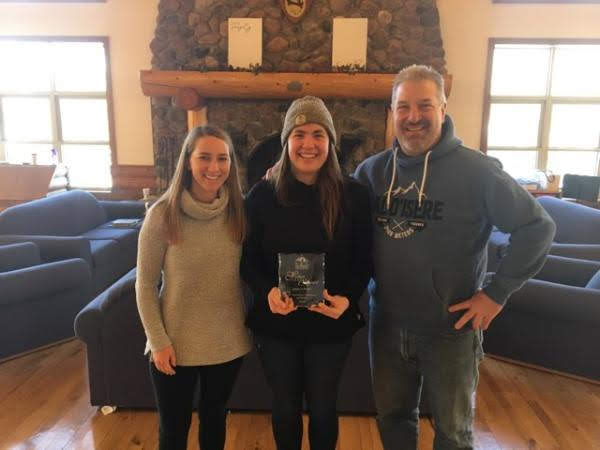by Jess Port, of HoneyRock
Walk with a child into a forest, field, or wetland and you’ll quickly end up squatting down at their level, marveling alongside them at something seemingly insignificant at first glance. Walk with an adult through the same area though, and it’s far less likely that you’ll end up with your shoes kicked off walking through the dirt hunting for bugs. |
| HoneyRock lagoon in snow |
 |
| HoneyRock cross-country skiing |
Having facilitated environmental lessons for a variety of ages from elementary schoolers experiencing the thick woods of Michigan for the first time to college-aged summer wilderness leaders going through training here at HoneyRock, I’ve picked up a few tricks along the way that can help re-kindle that sense of wonder and curiosity that can come with environmental integration in programming.
1. Get on their level
Kids have a unique perspective on nature simply because they are closer to the ground where there are so many things to see! It may look silly to the average passerby but on your next lunch break kneel by the base of a tree or waddle around a little patch of grass in the squatting position and see what you can find to marvel at.2. Tune your senses
One of my favorite activities to facilitate with people to bring greater awareness to their senses is to have them “put their deer ears on.” Sit and listen quietly – how many things can you hear? Can you identify any of the sounds? Now, cup your hands behind your ears to catch those sounds waves better – what do you hear now? Or take a lesson from your dog and dab some water on your upper lip/beneath your nose to amplify your sense of smell.3. Engage creativity
Draw, photograph, paint, or take a rubbing of something you find that intrigues you – keep a naturalist’s notebook or doodle these in the margins of your planner, checklists, or journal. Ask your staff and participants what analogies they can pull from the environment around them that tie into the lessons they are learning through your program.4. Build enthusiasm
If we’re excited, others will be excited. Get stoked about the hard shell of the acorn that withstood hitting you on the head during your run this morning or the blue-colored berries that you found hiding in bushes in your backyard that mash into a purple paste. Share these discoveries with others!5. Slow down and sit
Stare at a one by one square foot for at least five minutes – go for ten or more if you want a challenge. What do you notice? Boredom inspires curiosity, creativity, and observation. Take advantage of it.6. Kick off your shoes – yes, even in the snow!
Feel the earth or snow or grass in between your toes. Feeling like a kid yet? Crab walk across a lawn or forest floor to get the full experience underneath your hands and feet.The winter season here at HoneyRock has provided an excellent space for me to flex these muscles of wonder and curiosity and to develop my observation skills, encouraging me to press further into environmental integration in programming. Maybe it’s because of the quiet and soft light during the long golden hours before a winter afternoon sunset. Or because the landscape feels foreign and new (in an exciting way) when you’re surrounded by snow-covered pine trees towering over you. Or maybe it’s because of the way bird calls echo across the lake. Or the unique places you can access on snowshoes or cross-country skis that you wouldn’t get to on foot in the summer. Whatever it may be, it’s an exciting and unique place to rekindle one’s sense of wonder and curiosity and begin to integrate environmental observations into your life and, eventually, your programming.




No comments:
Post a Comment